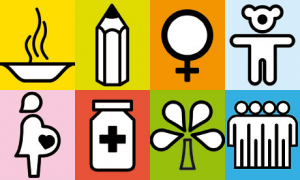
Established at the Millennium Summit of the United Nations in 2000, the Millennium Development Goals (MDG) are eight international development goals that member states and international organizations have committed to help achieve by the year 2015. With the 2013 Millennium Campus Conference being held at Northeastern University eight days from today, let us refresh ourselves on the current status of these eight goals, one day at a time.
1. Eradicate extreme poverty and hunger
According to the 2013 MDG report, the world reached its target poverty rate, five years earlier than planned, with the numbers decreasing by half between 1990 and 2010. In developing regions, the proportion of people living on less than $1.25 a day has fallen from 47 percent in 1990 to 22 percent in 2010. Despite this, however, at least 1.2 billion people continue to live in extreme poverty. In addition, the hunger reduction target is within reach, with the proportion of undernourished people decreasing from 23.2 percent in 1990 to 14.9 percent in 2010. Currently, one in eight people in the world continue to be chronically undernourished.

China is the leading country in fallen poverty rates, dropping from 60 percent in 1990 to 12 percent in 2010. In Southern Asia, poverty rates fell from 51 percent in 1990 to 30 percent in 2010. However, progress within sub-Saharan Africa is not as substantial, falling only 8 percentage points over the same time period. Currently, Sub-Saharan Africa is the only region in the world with an increasing rate, from 290 million to 414 million people living in extreme poverty.
Poverty continues to be one of the main factors of hunger and inadequate access to food. Due to the inability of individuals to perform labor productively from lack of proper food consumption, this in turn affects their ability to generate income and traps them into poverty. In 1990, 159 million children were underweight, but this number fell by 36 percent in 2011. Still, an estimated 101 million children under the age of five were found to be underweight in 2011, representing 16 percent of all children under five that year. The negative effects of under-nutrition, one of which is stunted growth, demand urgent action. The report claims that 165 million children under the age of five were stunted in 2011; a 35 percent decline from 1990, which saw 253 million children who were stunted. At the current rate, the UN has established that the target of halving the proportion of people who suffer from hunger will not be met by the 2015 deadline.
The Organization for Economic Co-operation and Development (OECD) reports that there have been setbacks in donations from states that committed to funding the MDG movements, from countries like Japan and Germany that have given less than they had promised, to Italy which has reportedly not given any donations at all. The MDG project has requested the assistance of the world’s richest nations to donate about 0.7 percent of its gross national product (GNP) in order to expedite the success of the UN in meeting the 2015 poverty alleviation deadline. As of 2012, out of the 22 countries that pledged to make their contribution, only five countries have reached their goal: Luxembourg, Sweden, Norway, Denmark and the Netherlands. The countries that have given the smallest percentage of their GNP are Switzerland with 0.45 percent donated, followed by Australia, New Zealand, Canada, the United States, and Japan with 0.17 percent. With these staggering numbers that the UN is trying to overcome, the likelihood of the project being 100 percent successful is unlikely, but some remain hopeful. As for me, one can only hope for the best, but one should also be smart by expecting the worst.
Kaoru Inoue
International Affairs ’17
Citation:
Millennium Project, “The 0.7% target: An in-depth look.” http://www.unmillenniumproject.org/press/07.htm.
Poverty, “International Aid – A Solution.” http://www.poverty.com/internationalaid.html.
United Nations Development Programme, “Millennium Development Goals.” http://www.undp.org/content/dam/undp/library/MDG/english/mdg-report-2013-english.pdf.



